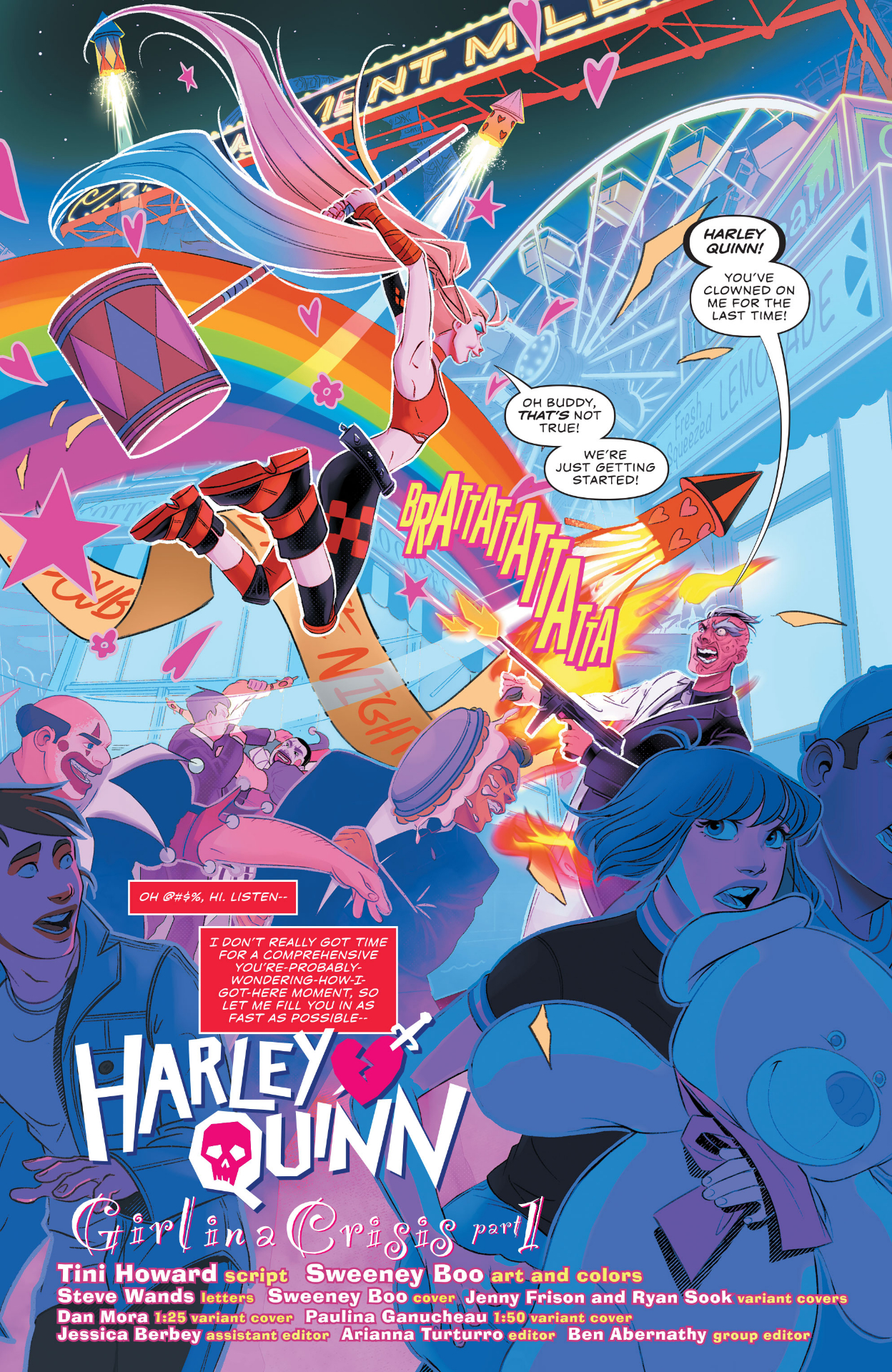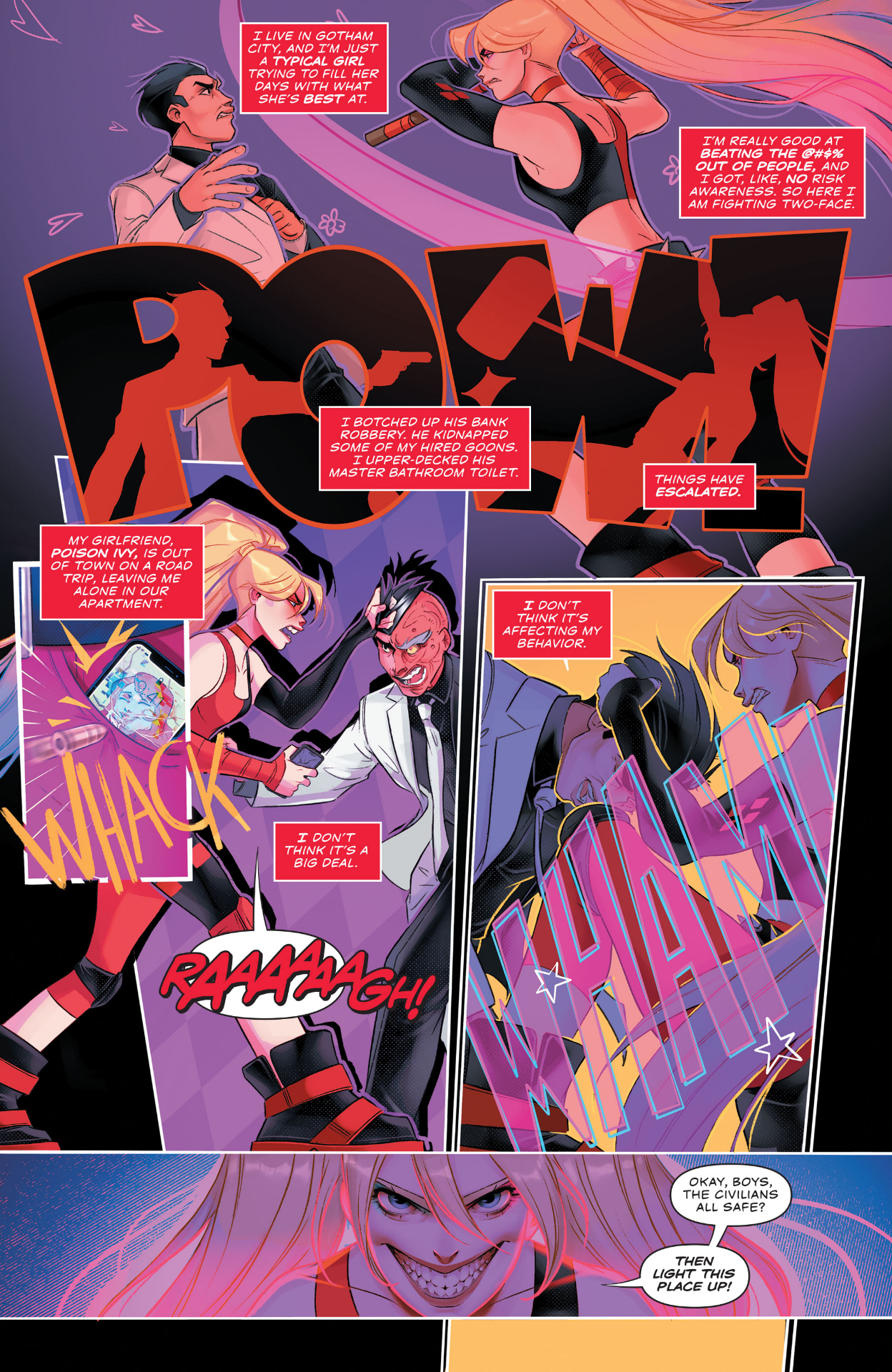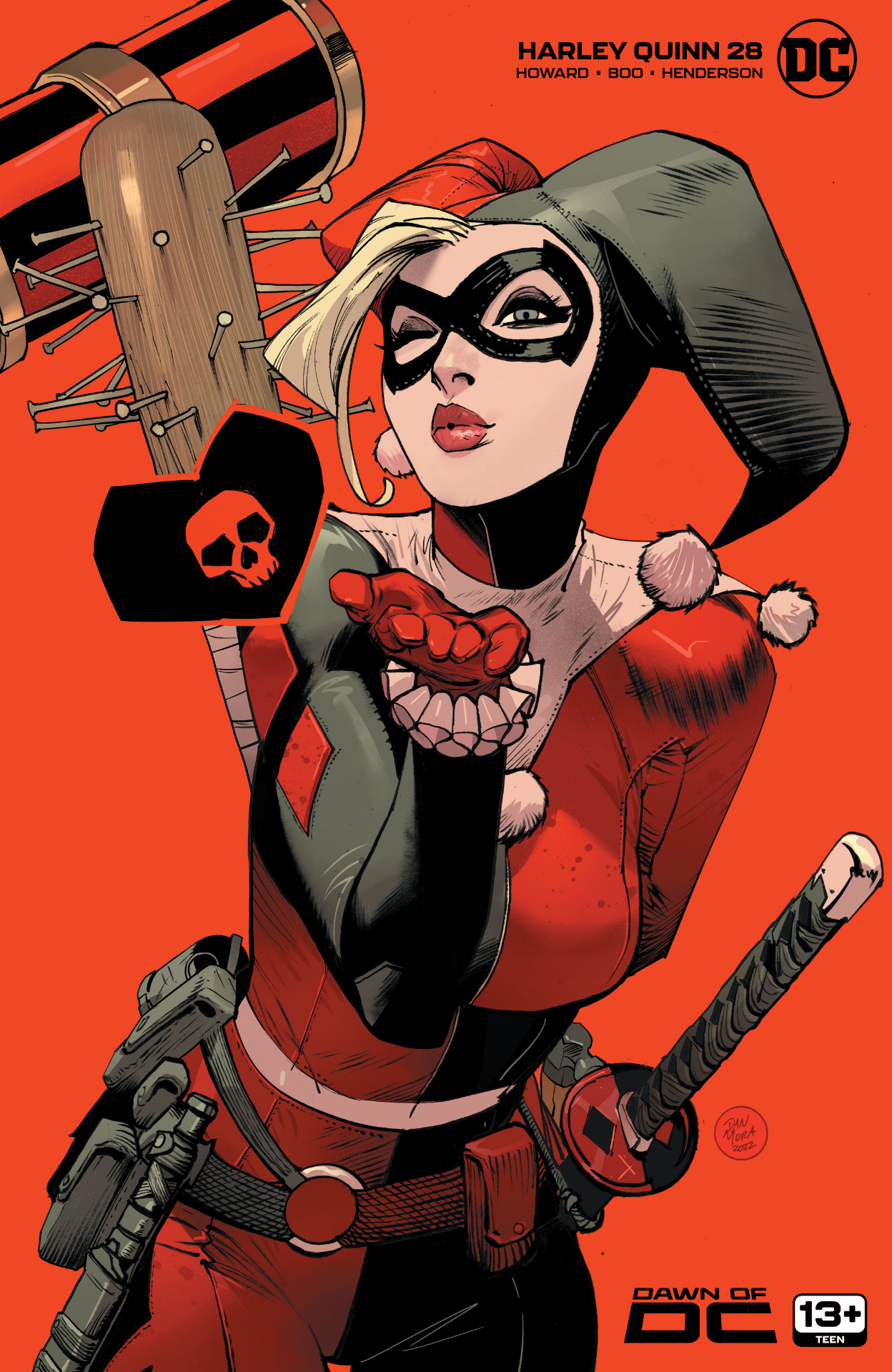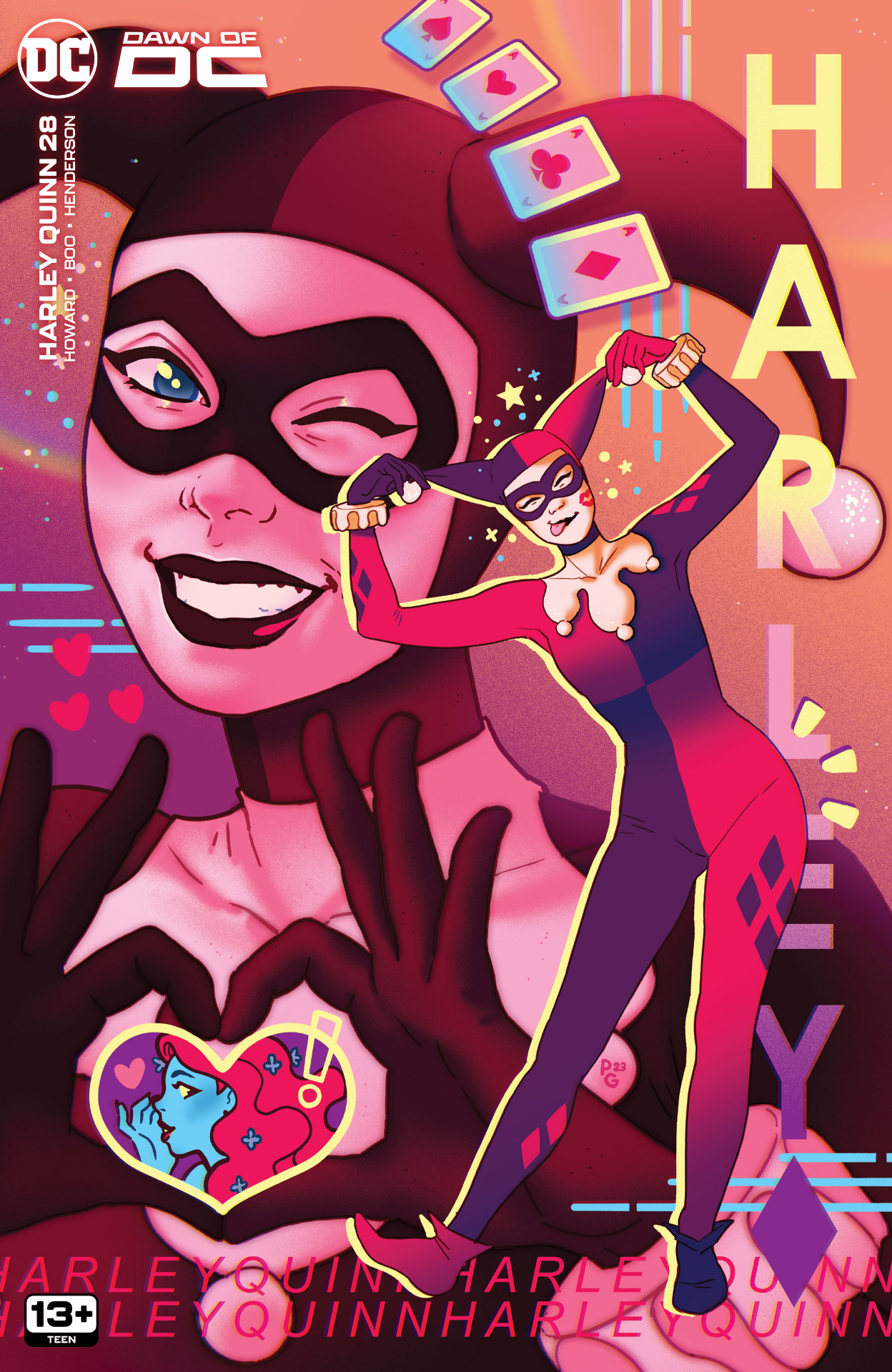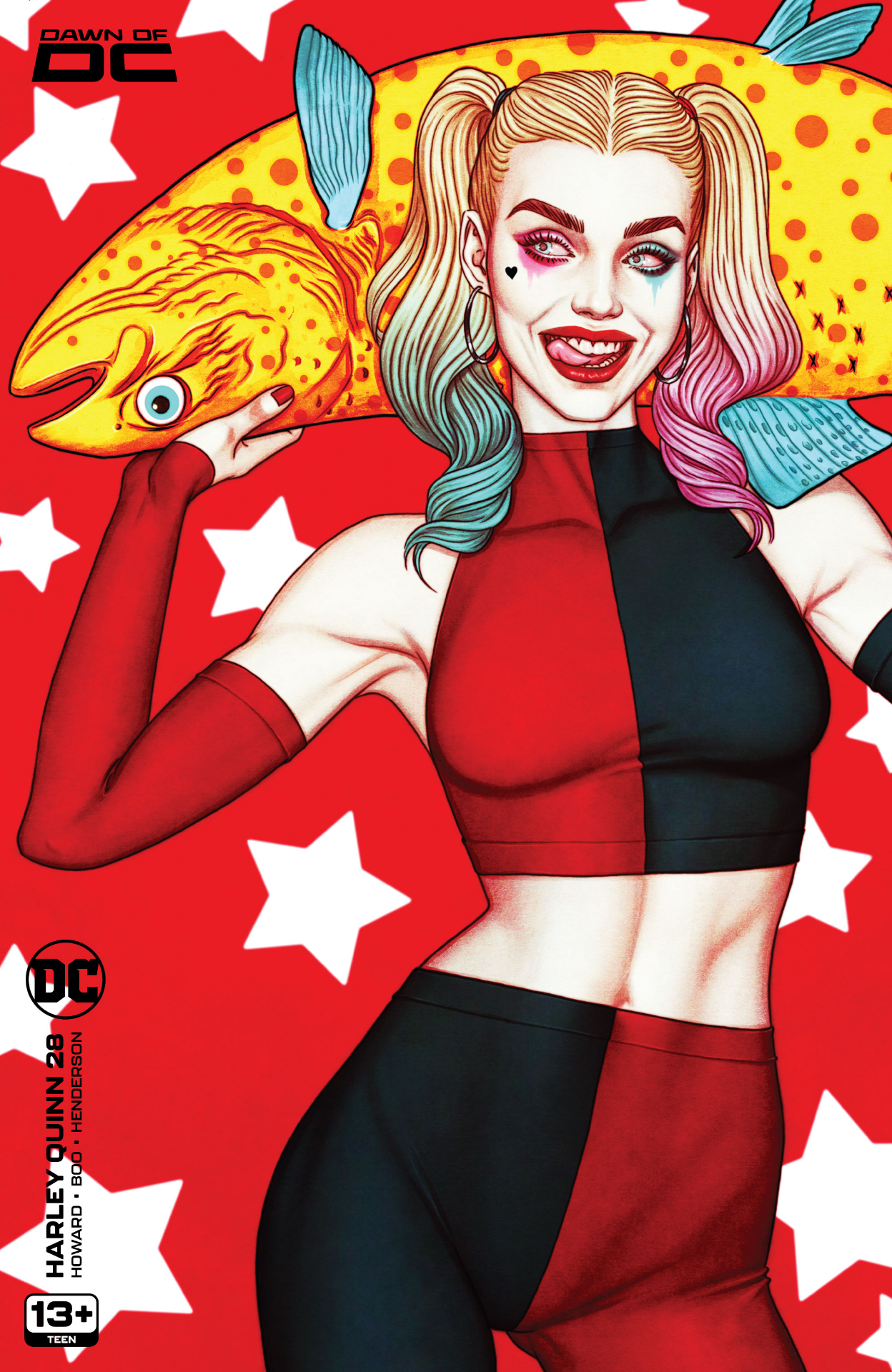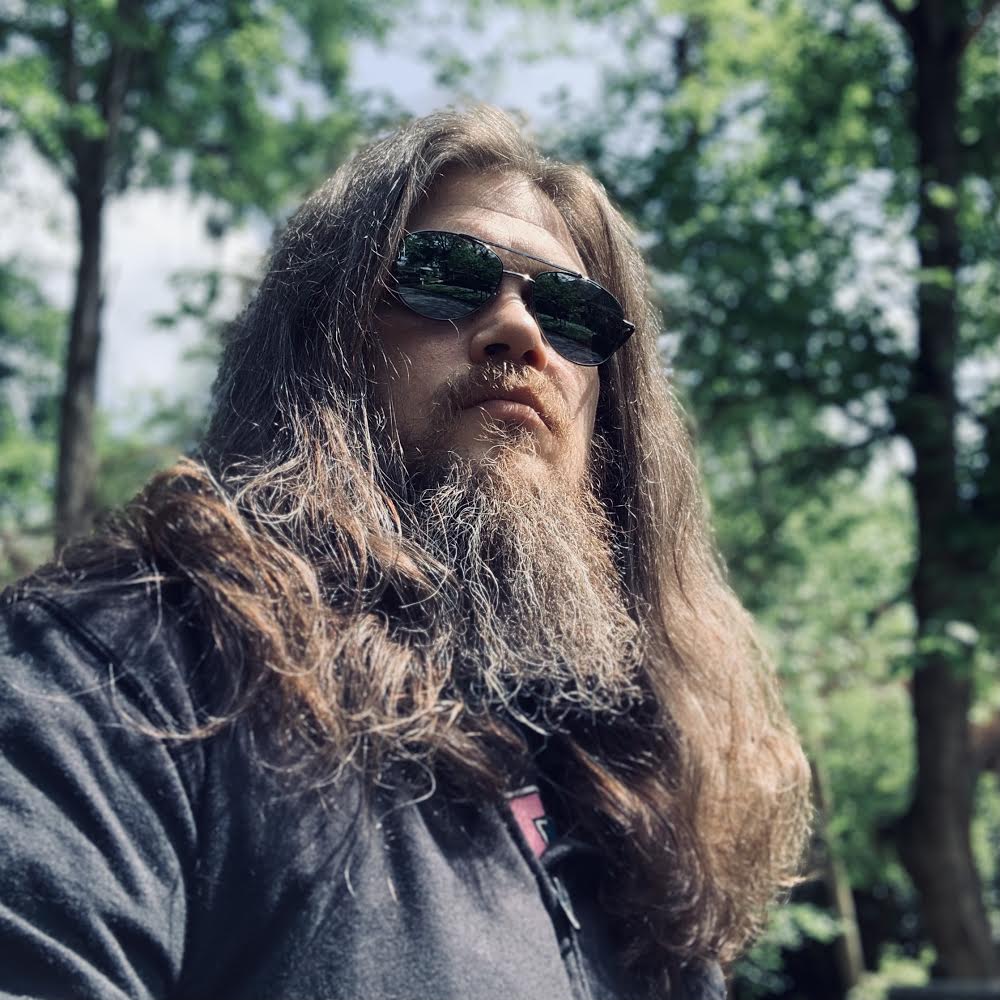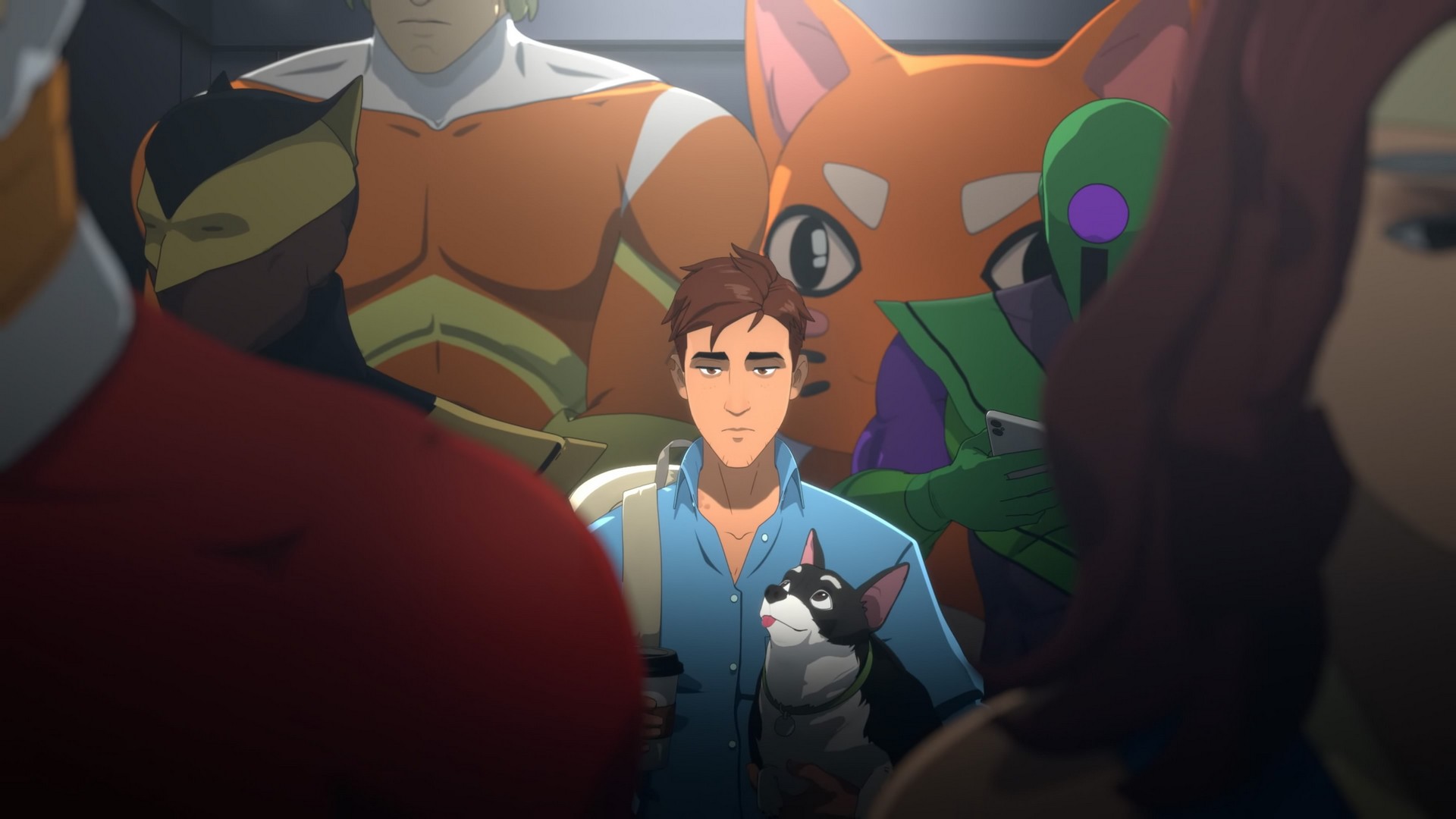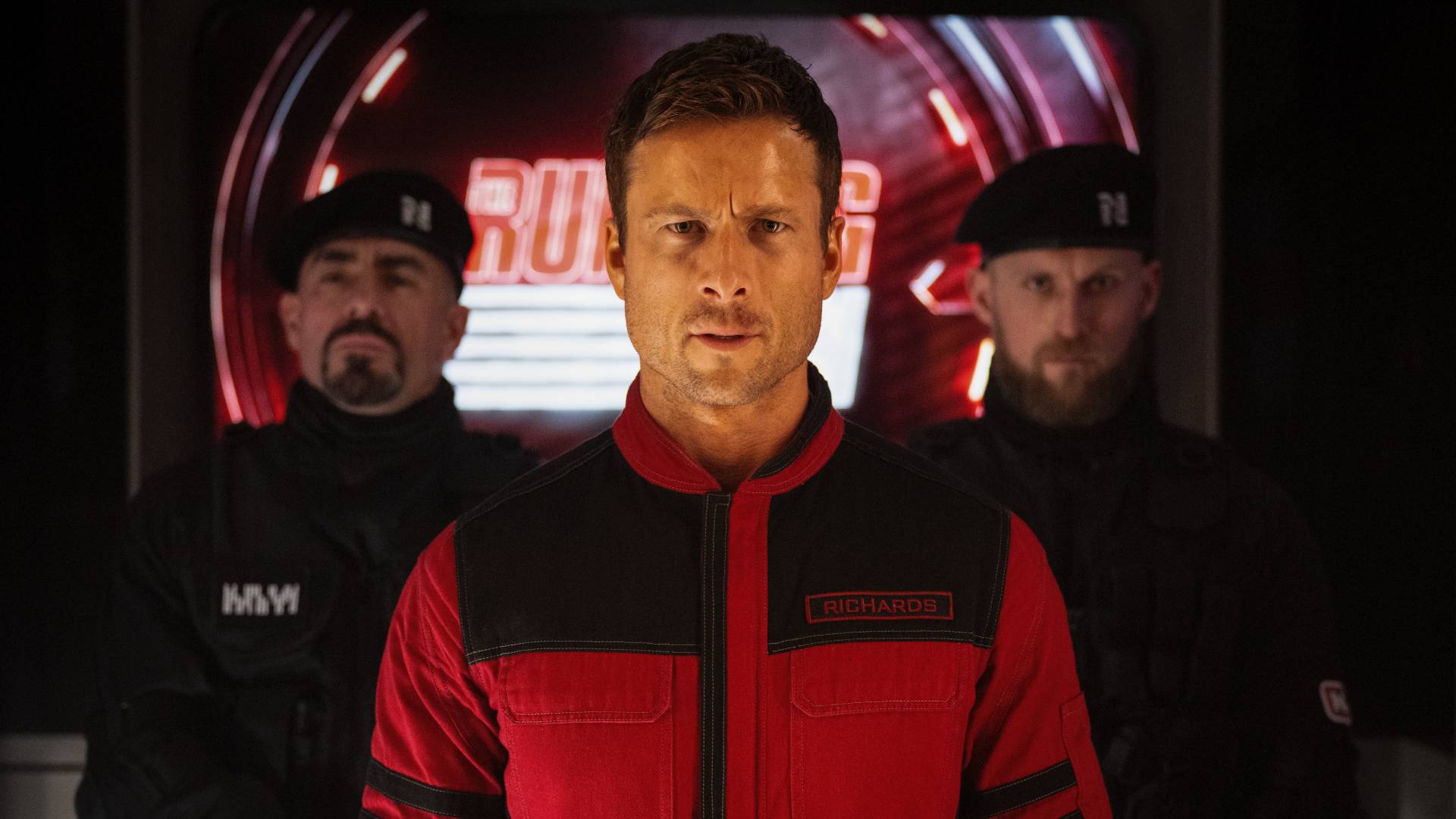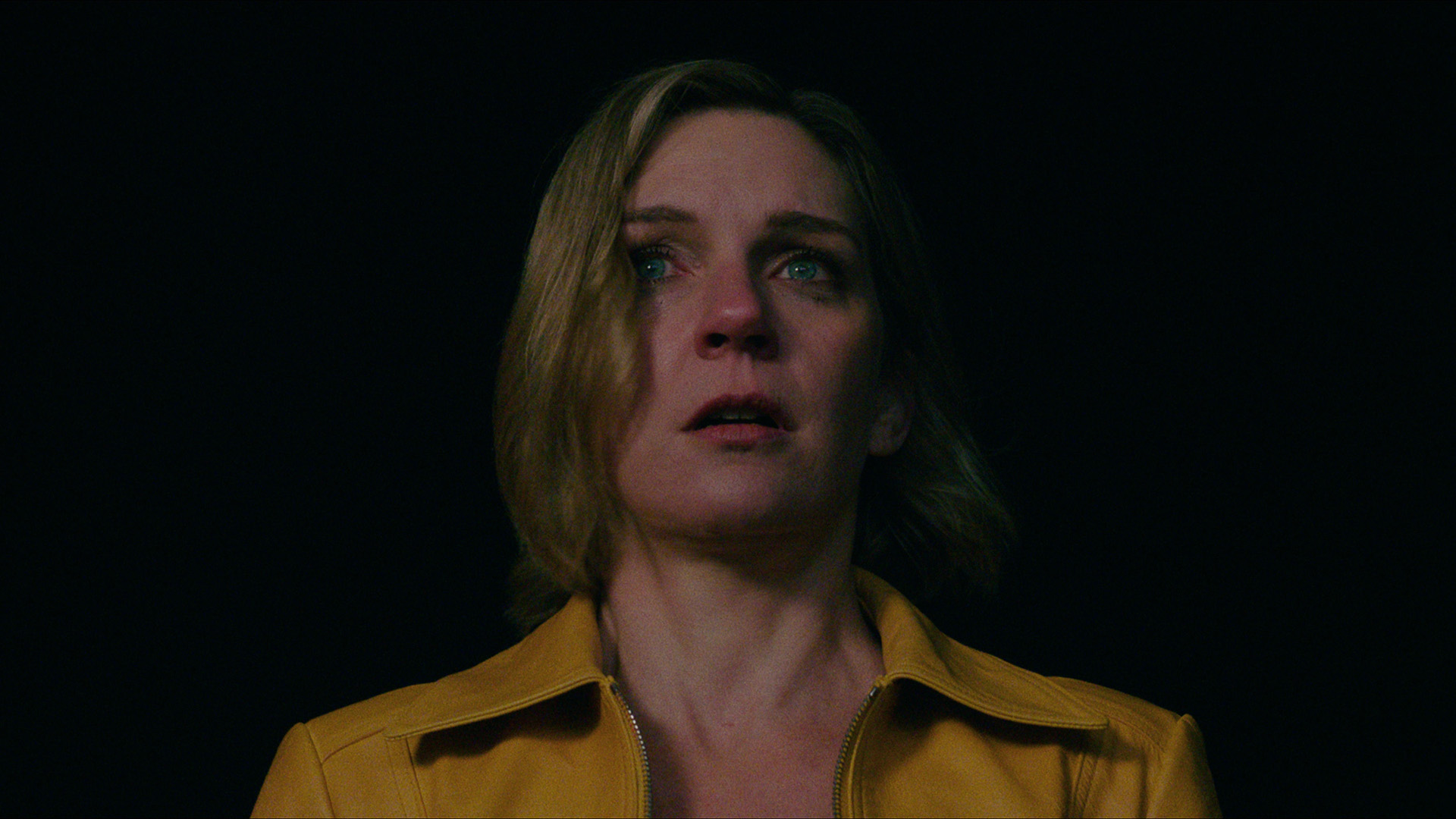Harley Quinn is cursing and pranking her way across the Multiverse for 'Dawn of DC'
Tini Howard and Sweeney Boo talk bringing Harley Quinn into the 'Dawn of DC' era
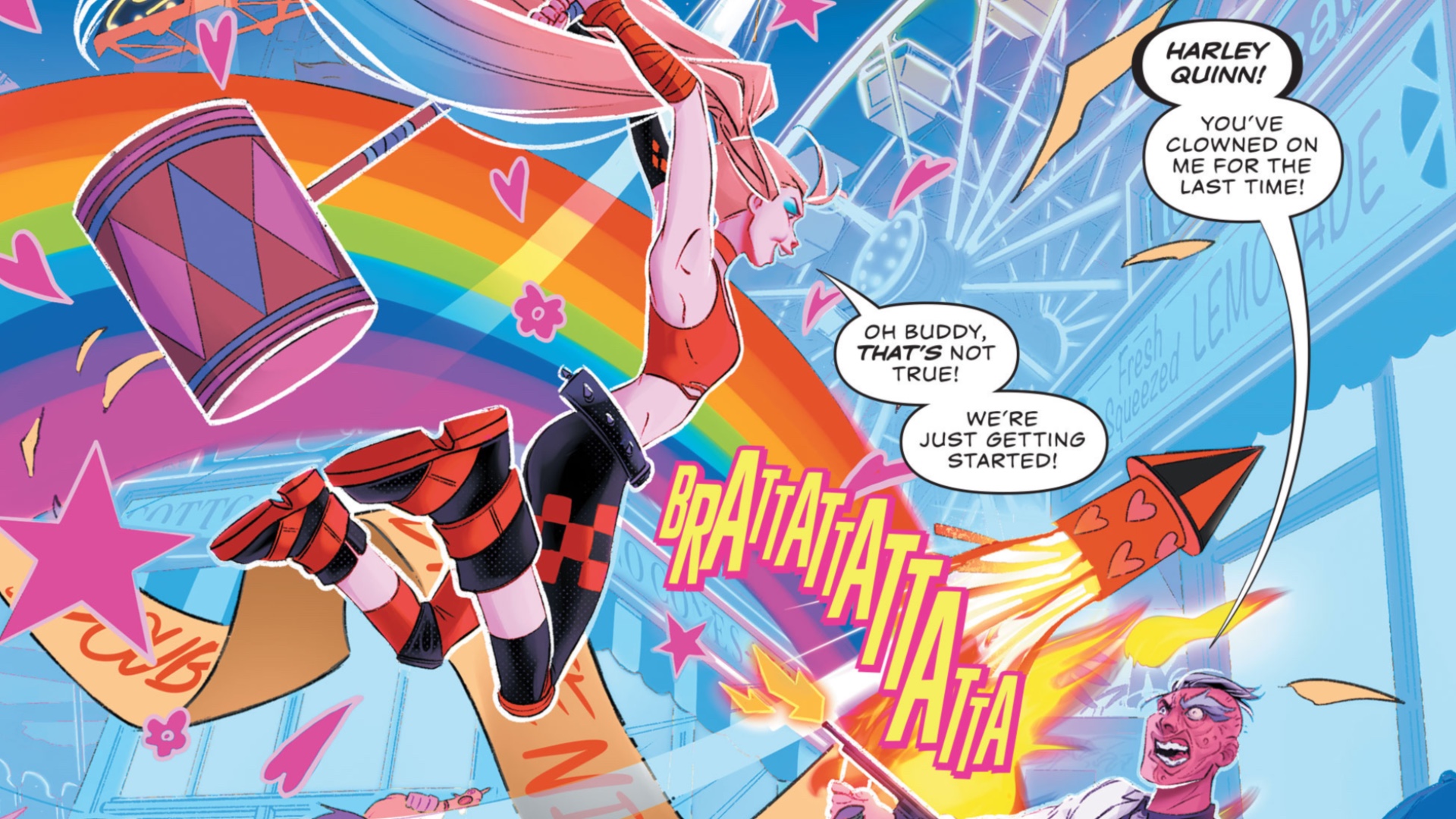
Harley Quinn is one of DC's most popular characters across media, from movies like Joker: Folie a Deux where she's played by Lady Gaga, to her own HBO Max animated series, and even games such as the upcoming Suicide Squad: Kill the Justice League.
And now, with her star burning as bright as it ever has, Harley Quinn is entering the DC Multiverse for a foundation-shaking new status quo with writer Tini Howard and artist Sweeney Boo.
With Harley Quinn #28, the pair's first issue as a creative team, now on stands, Newsarama had the chance to speak with Tini and Sweeney as they bring Harley into the 'Dawn of DC' initiative with an adventure unlike anything she's ever undertaken before.
Newsarama: Tini, Sweeney, Harley Quinn #28 is part of 'Dawn of DC,' which is all about bringing new perspectives to classic heroes. What does being part of 'Dawn of DC' mean for Harley Quinn both creatively, and from an in-story angle?
Tini Howard: That's a great question. I think every time you sit down as a writer and handle a new character, you have to make a new connection with them, and kind of forge your own relationship with them, figure out where you're going. Obviously you do your reading and get to know what's come in the past, but you and your artists are embarking on something new together, so you want it to feel like an embarkation, a beginning. So 'Dawn of DC' has really helped with that.
And in our case, you're seeing Harley respond to some big things in her life lately, like you know, her girlfriend Poison Ivy getting her own title. Which is kind of meta, but in story terms, that matters. That changes those characters.
The first arc is called 'Girl in a Crisis'. So if you're, you know, a longtime DC fan, you know that the term 'Crisis' has multiple meanings. And for 'Dawn of DC' that means Harley is kind of having to look her own position in the DC Universe in the eye and realize how far she's come.
Get the best comic news, insights, opinions, analysis and more!
Not just as a woman who's changed a lot and become a, you know, queer, mentally ill superhero, but also the way she's become a pillar of the DCU in a lot of ways that were unexpected to her, certainly. It's a really exciting time for her to take a look at herself and wonder what the hell is going on.
Sweeney Boo: What can I add to that? [laughs] The idea that you can get your start with the title even though it's not relaunching with a new volume. I feel like the way our team is going with the story is very easy to just pick it up. It starts with Harley "settled," everything is going day-to-day, but then it's actually not.
And it's not just about what's going on with her and Ivy. You have Harley and her everyday life, but suddenly everything is going to start blowing apart. It's gonna be crazy soon, like, actually really fun.
Nrama: Tini brought up coming together with you, Sweeney, as a new creative team. What has that process been like since you do every aspect of the art aside from lettering, from pencils, to inks, to colors? How does that affect your approach to working with a writer? Are you looking for a little more room to push and pull with the script?
Sweeney: Yeah, I feel like as an artist you always kind of have to adapt because not every writer works the same way. I do love to be able to play around with a script. And I'm lucky enough that Tini lets me do that.
And also like, the script often has little notes like "Hey, if you want to add some more stuff in here, or if you have another idea for this…" So I always try, for every scene, to look at how necessary everything is, how important each part is to the page. Sometimes I'll add several panels to show a repetitive action, I play around with stuff like that.
When I send out the layouts, I'll show how I played around with stuff so I know everyone is on board, and to leave room for everyone to have an input. And having that freedom is really great.
Tini: Yeah, definitely. I don't see Sweeney and myself as like, writer and artist, we're co-directors. I've got the script, and she's my cinematographer. We're looking at the dailies together and seeing what works and what doesn't.
She's like, "Hey, you wrote this thing. It didn't work that way," and I'm like, "Hey, you drew this thing, I'm gonna rewrite it." It's building it together. And that's how I like to make books.
I'm not the sort of person that I turn in a locked script and say, "talk to me in a month." I feel weird and at sea when I'm not talking with my artists regularly. And along with the editor too, we're all kind of building this story together, so everyone has to have an input.
Nrama: On that note, there's a really interesting dynamic for Harley in this issue where she's getting involved in some Multiverse stuff, while at the same time she's being dragged way back down to earth by some consequences of being a kind of anti-hero, vigilante. What makes the Multiverse feel like the right angle to play off of that very human side of Harley that's coming out in the story?
Tini: I love the DC Multiverse. I love Crisis stories. I love Grant Morrison's Multiversity. I love Elseworlds stories. It's one of my favorite things about DC, so in a lot of ways getting to do this is kind of like a love letter to that. And it works really well because it's a really effective way to make a character look at their own place in things. Where they are, how they've changed, where they've come from, where they might be going. It's a real gift to characters.
And we're also at a place right now where that's been in comics for a long, long, long time. But now, I mean, look at the Oscars. That's a little more Zeitgeist. Now, people understand this idea a little better of who you could have been elsewhere as a storytelling conceit, which we've always had, right? We've all seen It's A Wonderful Life. We understand the Elseworlds aspect of it, and that's really fun.
It's the way DC has always done it, and the Multiversity of it has always been really fascinating to me. I once had an editor once tell me long ago that, you know, if you're going to do this big, outlandish, otherworldly, universal multiverse stuff, you've got to make sure you've got it anchored to something in reality, or people's eyes glaze over.
I get that, you know, I really do. So this was an ideal way to do that. Because, you know, I think people are really interested right now in Harley's day to day because she has a girlfriend, she has a stabilizing effect in her life that is important to her. And for the first time she and her girlfriend both have their own books. They have their own jobs, they're both very busy.
Nrama: In Harley Quinn #28, she's got something of a new nemesis in the form of Two-Face, who Harley starts a, in your words, "prank war" with. What makes Two-Face the perfect villain for that kind of story? And Sweeney, tell us about your design process, how did you get to this version of Two-Face that's geared toward Harley's world?
Sweeney: I grew up with '90s cartoons, Batman: The Animated series, so like, that's the Two-Face I always have in my mind. But also, Two-Face changes his outfits all the time. He loves clothes, his clothes are how he does part of his thing. So when there's a scene at a bar, he wants to be dressed a certain way. He has to have a little pizzazz, and that's really where I wanted to go with his character. I want to play with the clothes as much as I can. To me, Two-Face has a giant dressing room with tons of outfits that he can change into. That's what I was going for, really.
Tini: Yeah, and it's so extra perfect that you gave him that little flair, cause that's part of the fun of having him in Harley. It's funny cause I don't think Two-Face would call it a "prank war," I think he would take it very seriously, like if it were a Two-Face book instead of a Harley book, it would be very serious. Meanwhile Harley just thinks he's fun to fight with cause she can do things like take one of his shoes, so he freaks out cause they're supposed to be a pair - and that's kind of terrible, right? LIke, Harley, he's crazy. You're crazy too, so be nice! [laughs] In her mind, it's just a way to blow off steam and kill some time, but it isn't that way for everyone else, especially people that live in Gotham.
But also I just love Two-Face, he's one of my favorite characters in Gotham City. He's just so great to look at, and I assumed Sweeney would draw the hell out of him. So he's coming back, the prank war has not ended yet. It is another thing Harley must manage while she has to wear a lot of Multiversal hats.
Nrama: One of the things that Harley Quinn #28 nails is that Harley's modern voice, her personality, is very salty. She's got a bit of a dirty mouth. So of course, because that's being portrayed in a superhero comic, there are a lot of grawlixes throughout the issue, the strings of symbols that replace swear words. Tini, do you always know what the grawlixes represent when you write the script, like what she's actually meant to be saying?
Tini: I love grawlix! I've considered getting a tattoo of grawlix. I love them.
Though, I will say like, for example, last night, I was working on another DC script and I was doing a lettering pass, and I saw that I'd left in a couple of like, S-bombs and F-bombs. My editors are like "Umm…" and I'm like "Oh right!" [laughs]
Cause I do often know what they say. With grawlixes, I think about the syllables usually. Like, I hear it in my head as "You - - - -!"
I hear the actual word in my head, so when I go from what the bad word is in my head to what it actually becomes on panel I'm thinking of like, the cadence. I'm thinking of the pattern. Sometimes I'll do the right number of letters, but it's fun when people come to my table to get a book signed, and they just like, point to a grawlix and say a filthy word to me, and I'm like "What? Oh, no it was a different word!" [laughs]
Nrama: Sweeney, that leaves a lot of the job of showing what she's actually thinking to you. How do you interpret that into Harley's body language and expressions?
Sweeney: Um, I personally, I have a bit of a sailor's mouth. So I swear a lot. When I read the script I was like "Oh my god, she is me! This is amazing! She swears so much!" [laughs]
I always have a word in my head to replace the symbols on the page, so for however she's acting, it's usually how I would act, or like it's just how it feels. It has to be very animated to support whatever she's thinking.
Tini: The way you draw Harley's hair kills me. I feel like her hair cusses more than she does! Like there's a shot of her when she's in court and she has her bunny pigtails down, and like, they're just so droopy and so sad. It's one of my favorite panels, like the hair is talking, the hair is conversing, the hair is storytelling. It has a lot of character [laughs]
Nrama: Another thing that really comes out in Harley Quinn #28 is Harley's connection to henchmen, people in the trenches out on the streets of Gotham City, who have to rent their own clown suits and things like that. What makes that such an interesting and integral part of Harley as a character, even as she's becoming more of a leading character in her own right?
Tini: I think she's been that henchman, you know? She's been the person who was a sidekick being treated poorly. So like, of course, she's going to pay the guys extra when they ask for it. And that isn't always the case, right? For Harley, I think she's trying to break a cycle.
Like she was, you know, treated really, really badly. She was abused by her boss and partner. So you know, it's kind of like a moral compass for her. She's like someone who would always leave a tip, because she waited tables. It's that kind of thing. She's, she's been on that. And so like, there's no way she's going to disrespect these guys. Because that's who she was, you know, she remembers being disrespected.
Nrama: There's a fish in Harley Quinn #28 which becomes kind of the focal point of the Multiversal shenanigans Harley is getting roped into, and which seems to hint at Harley's connection to what's going on. And of course there's a backup story by Erica Henderson which shows an alt-universe Harley. So I'll just ask flat out, are we looking at the birth of a Harley-verse? Sweeney, how many Harleys are you actually going to wind up drawing here?
Sweeney: I'm going to draw as many Harleys as I have to! [laughs] If I have to draw a page with 100 different Harleys on it, I'm gonna do it! But there's a lot of like, other universe characters that are maybe going to come up and they're really fun, and maybe unexpected, actually. I'm really excited for people to see that.
Tini: It's funny, I've done some other books where I've gotten to write a lot of different versions of one character. So I'm not quite doing that here. Where we're going is a little more of a stress test for Harley, because she's gotten more important than she ever expected, both in terms of her place in the Multiverse and as a character, an IP.
And that's something that you struggle with when you're someone like a queer, mentally ill woman who wasn't even sure if you were going to live very long, and then all of a sudden, one day you're a lot more important than you thought you'd ever be. You have to recontextualize what that means about who you are and what your place is where we're going, but it's gonna be super fun. I promise. It's hilarious. It's hilarious. I really like stories when people invite me into their truth and say, "But we can laugh about it a little," I think that's a cool thing.
Harley Quinn is one of the best female superheroes of all time.
I've been Newsarama's resident Marvel Comics expert and general comic book historian since 2011. I've also been the on-site reporter at most major comic conventions such as Comic-Con International: San Diego, New York Comic Con, and C2E2. Outside of comic journalism, I am the artist of many weird pictures, and the guitarist of many heavy riffs. (They/Them)

